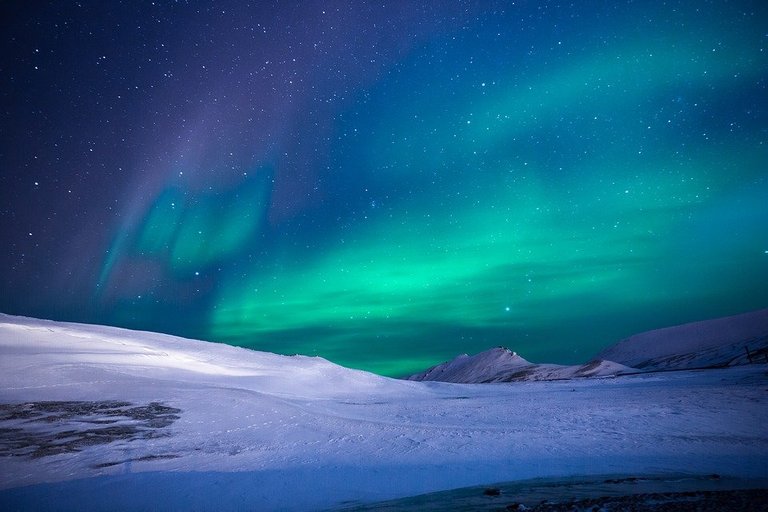A very dark, dense and dusty cosmic clods were discovered by astronomers. In the universe, when the gas and dust are compressed until it is very solid in space then there can be no light passing through it. As a result, the area will become very dark. Such is the condition of cosmic clods found by the astronomers. But how can the cosmic clods be seen if he's so dark?

Michael Butler from the University of Zurich who led the research conducted infrared observations using NASA's Spitzer telescope. As a result, they not only succeeded in discovering the presence of cosmic clods but also receiving information about how a star is formed.
In a study by Michael Butler, they measured the mass and structure of the observed cosmic clods.
Birth of the stars of class O

credit imagewikimedia
The cosmic clods is a very dark area filled with cosmic clouds of gas and giant dust at a distance of 16000 light years. This clot is in the stage of evolution to become a massive star group in the Milky Way. It will bloom and form the very strong stars we know as stars of class O, whose formation remains a mystery to astronomers.
The star of class O is a very rare star and includes a little in the Milky Way. It is estimated there is only 22000 class O stars in the Milky Way galaxy. The stars in class O are very hot stars with surface temperatures between 30000 - 52000 K and mass between 15 - 90 solar masses. This star is very luminosity with luminosity 30000 - 1000000 luminosity Sun. This giant star has an enormous influence on its surroundings. Stellar winds and intense radiation sweep through materials that can unite to form other stars or planetary systems.
But the star of class O is short and he will quickly end up in a supernova explosion that leaves neutron stars and black holes. The presence of the star of class O gives an important role to form the heavy elements needed for life.
The information of the process of formation of massive stars and stars in it was obtained after a map of the cloud structure and its solid core was made. From the map, the mass of clouds reaches up to 70000 solar masses and is compressed into areas of 50 light-years in diameter.
Cloud structure maps are made from Spitzer's observations of infrared light that easily penetrate gas and dust compared to the visible light that has shorter wavelengths. The incidence is similar to the conditions at dusk or foggy days where longer wavelengths like red more easily reach the eye through the fog, which absorbs and diffuses blue light that has shorter wavelengths.
Observations of Gigantic Star Clouds
In the case of these cosmic clouds, the highly densely packed star material inside the cloud is also filled with scattered dust and blocking not only visible light but also the infrared background light.
Observations in infrared wavelengths are one way to get a peek at cosmic clouds that have been hard to understand. And astronomers can also reveal stars that are in the early stages of formation. During the observation, the Spitzer telescope detected the infrared light emitted by young stars still covered in a dusty cocoon. star formation in the embryonic stage.
In studying the information obtained from these clouds, astronomers measured the amount of infrared light obscured by clouds and the shadows obtained were used to infer where the matter was put together in a cloud. Clumps of gas and dust in the clouds will collapse and form hundreds of thousands of new stars.
Most of the stars in the universe, including the Sun, are believed to form in cosmic cloud environments. Low-mass star clusters are much more common and have been well studied by astronomers. But. stars that give birth to massive stars such as clusters discovered by Michael Butler et al including rare and distant making it more difficult to find and learn.
This discovery will lead astronomers to understand the formation of type O stars, as long as astronomers continue to ask how it may happen that the accumulation of matter in the scale of 10 - 100 times the mass of stars without the occurrence of scattering or split into smaller stars.
Reference :
- https://www.sciencedaily.com/releases/2010/07/100707152207.htm
- https://en.wikipedia.org/wiki/Cosmic_dust
- http://www.scienceclarified.com/Sp-Th/Star.html
- http://www.spitzer.caltech.edu/images/5836-sig14-010
- https://www.jpl.nasa.gov/spaceimages/details.php?id=PIA18010


@whalhesa I wrote to you on discord :)
@whalhesa do you mean cosmic clouds, or cosmic dust clouds?
I mean is a cosmic dust blob
Brother @whalhesa and @physics.benjamin, could you drop me steemstem discord link please? I would like to join. Thanks in advance
when your post gets upvote steemstem, you will be invited by them
I see... thanks
I got it !
Peace, Abundance, and Liberty Network (PALnet) Discord Channel. It's a completely public and open space to all members of the Steemit community who voluntarily choose to be there.Congratulations! This post has been upvoted from the communal account, @minnowsupport, by whalhesa from the Minnow Support Project. It's a witness project run by aggroed, ausbitbank, teamsteem, theprophet0, someguy123, neoxian, followbtcnews, and netuoso. The goal is to help Steemit grow by supporting Minnows. Please find us at the
If you would like to delegate to the Minnow Support Project you can do so by clicking on the following links: 50SP, 100SP, 250SP, 500SP, 1000SP, 5000SP.
Be sure to leave at least 50SP undelegated on your account.